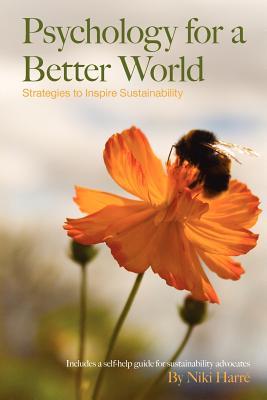There are two basic coping strategies that people use to deal with the emotional impacts of environmental issues. It’s helpful to be aware of these, and to know your habitual style. It’s even better to learn how to be flexible and use both strategies to support yourself.
Note: I’ll be doing a series of posts in 2017 that draw from a book project on nature and mental health. The coping strategies in this post can be used to combat many modern stressors, including those related to politics. — Thomas Doherty, Psy.D.
 Your ability to deal with feelings of anxiety or despair about troubling issues concerning the natural environment is an essential life skill for global citizens in the 21st century. I consider this essential for three reasons: (1) many environment problems, like climate change or species extinction, are growing at exponential pace given the rate of human population growth and technological change, (2) we have day-to-day, real-time access to stressful information about these issues, through images, narratives, videos, and experiencing them in virtual reality, and (3) the capacity to move forward in the midst of troubling feelings is necessary for doing long term, creative work to support conservation, sustainability and political advocacy.
Your ability to deal with feelings of anxiety or despair about troubling issues concerning the natural environment is an essential life skill for global citizens in the 21st century. I consider this essential for three reasons: (1) many environment problems, like climate change or species extinction, are growing at exponential pace given the rate of human population growth and technological change, (2) we have day-to-day, real-time access to stressful information about these issues, through images, narratives, videos, and experiencing them in virtual reality, and (3) the capacity to move forward in the midst of troubling feelings is necessary for doing long term, creative work to support conservation, sustainability and political advocacy.
Given the scope of environmental problems, it is easy to distract yourself, feel like a powerless bystander, or become an expert at using gallows humor. Kalsarikannit anyone? [This is a Finnish term that roughly translates to “drinking home alone in your underwear, with no intention of going out.”]. Healthy coping begins when you can reassure yourself that feelings of concern or grief you have about the plight of the natural world are quite normal and to be expected. They are OK to feel inside and to express in direct way to other people. The positive feelings of inspiration and perseverance that flow from your environmental values are normal too!
Recently, a former student in the ecopsychology program I founded sent me a link to a heartfelt essay on environmental despair, The Destruction of Experience: How Ecopsychology Has Failed. I admired the author’s courage in being “out” about their personal struggles and their anguish about, in their words, “today’s world where we are poisoning our water, making our air nearly unbreathable, burning our soil at dizzying paces, and irreversibly altering our climate.” I also shared their disappointment that the earnest “ecopsychology” efforts of the 1990’s do not seem to have taken root in the wider culture.
Because of the way I spend my time, like researching the mental health impacts of global climate change, the potential to feel depressed about humanity’s impacts on the planet is an occupational hazard. Yet, almost every day I also hear about positive events and gifted individuals doing inspired work to help humans better live in harmony with the nature. Perhaps this is how I keep in touch with my capacity for growth and for hope L, and don’t get too attached to the optimism that I feel on one day and the pessimism I feel on another.
In a response I penned to the “Destruction of Experience…” essay, I suggested that the author had drawn too narrow a circle around one effort at ecopsychology thinking, indeed mainly one book, to make the broad and sweeping conclusions he did. I added a reminder about one of the most important insights of ecopsychology: that we deal with “environmental issues” and “personal issues” at the very same time. One of the complexities of “eco-therapy” is recognizing the subtle distinction between the emotional lens through which you see an environmental situation, and the situation itself. A perception of living in a hell (as the author eloquently described) might as much be determined by one’s personal psychology as the state of the world around them.
Two Ways to Cope When You Feel Bad about Environmental Issues
At the risk of simplification, there are two basic coping strategies that people use to deal with the emotional impacts of environmental issues. It’s helpful to be aware of these, and to know your habitual style. It’s even better to learn how to be flexible and use both strategies to support yourself. Once you get a sense of these, it will also help you to better understand how the people close to you react and how best to support them.
 When dealing with environmental problems, one tactic is to focus on creating a compelling vision and building motivation and excitement about this vision. This approach leverages positive emotions to create other positive emotions. This is a “broaden and build” approach, to use the language of positive psychology (see work of psychologist Barbara Frederickson and colleagues) My New Zealand colleague Nicki Harre has a great video that exemplifies a positive, broaden and build approach to tackling environmental problems. A different approach is to move deeply into feelings of concern and despair that accompany environmental issues to seek authentic self-expression and experience emotional release. The energy created then propels the person into further action. This is called a “despair and empowerment” approach, popularized by environmental philosophers such as Joanna Macy. What is Missing?, Artist Maya Lin’s virtual “global memorial” to extinction and the writings of the Dark Mountain Project are good examples of a despair and empowerment approach.
When dealing with environmental problems, one tactic is to focus on creating a compelling vision and building motivation and excitement about this vision. This approach leverages positive emotions to create other positive emotions. This is a “broaden and build” approach, to use the language of positive psychology (see work of psychologist Barbara Frederickson and colleagues) My New Zealand colleague Nicki Harre has a great video that exemplifies a positive, broaden and build approach to tackling environmental problems. A different approach is to move deeply into feelings of concern and despair that accompany environmental issues to seek authentic self-expression and experience emotional release. The energy created then propels the person into further action. This is called a “despair and empowerment” approach, popularized by environmental philosophers such as Joanna Macy. What is Missing?, Artist Maya Lin’s virtual “global memorial” to extinction and the writings of the Dark Mountain Project are good examples of a despair and empowerment approach.
Both Broaden & Build and Despair & Empowerment strategies are useful and reflect the reality of the world. I find people tend to gravitate toward one or the other, given their temperament or the situation demands. I was recently talking to an old friend who described his recovery from a serious back injury after his bike was struck by a car. He said at some point he decided to stop running away from all the issues, and instead run toward them. A despair and empowerment approach made more sense.
Best to not get attached to one of these modes. Either approach taken to an extreme becomes a problem. Superficially upbeat approaches minimize the harsh reality of environmental degradation and people’s suffering though environmental injustices. Thoroughly gloomy approaches obscure the beauty in our lives, and discount evidence for progress toward care and stewardship of the natural world. Where I live, thousands of people go to work every day to protect nature, other species, and human health. Many more do nonprofit work, volunteer, or lend financial or political support. This is part of a global “blessed unrest” of people taking on the environmental, conservation, and sustainable energy cause worldwide. Both emotional extremes also shortchange young people by burdening them with their elders’ emotional baggage and misleading them with simplistic images of utopias or dystopias that don’t do justice to the complexities of the world.
What Does This Mean for You?
To identify your typical or default coping strategy, think back to the last time you actively coped with some troubling feelings about environmental issues, or another life setback. In this case, think of a time that you coped in a healthy way, not just by numbing or distracting yourself, being irritable and “pissed off,” or wallowing in Kalsarikannit. Think about a time when you acted in a way that would highlight who you aspire to be, your “best self.” Did you begin by calling to mind a positive vision, idea or role model that would pull you forward? Or did you resolve to confront your negative feelings and move more deeply into them until you felt their power weaken and newer, more positive emotions arise? This should give you some clues.
Putting this Lesson into Practice:
-
Find your preferred (or habitual) coping style: “Despair and Empowerment” or “Broaden and Build.”
-
Remember that both approaches are helpful and accurately describe positive and negative aspects of the world.
-
Become aware of the coping styles of people close to you.
-
Practice sharing your feelings about environmental problems directly and explaining where you are coming from.
-
Practice supporting others in the ways they need.
-
Use “Broaden and Build” and “Despair and Empowerment” strategies to cope with other issues.
In a future post, I will talk about how you can integrate both coping techniques to actively ride the waves of ups and downs associated with environmental advocacy, and work on other tough causes. This will support our larger project of building your sense of your environmental identity and empowerment, so you can manifest your visions of a safe and healthy world for your community and the planet.
Good luck with this. Let me know how it works for you.
— Thomas Doherty, Psy.D.

